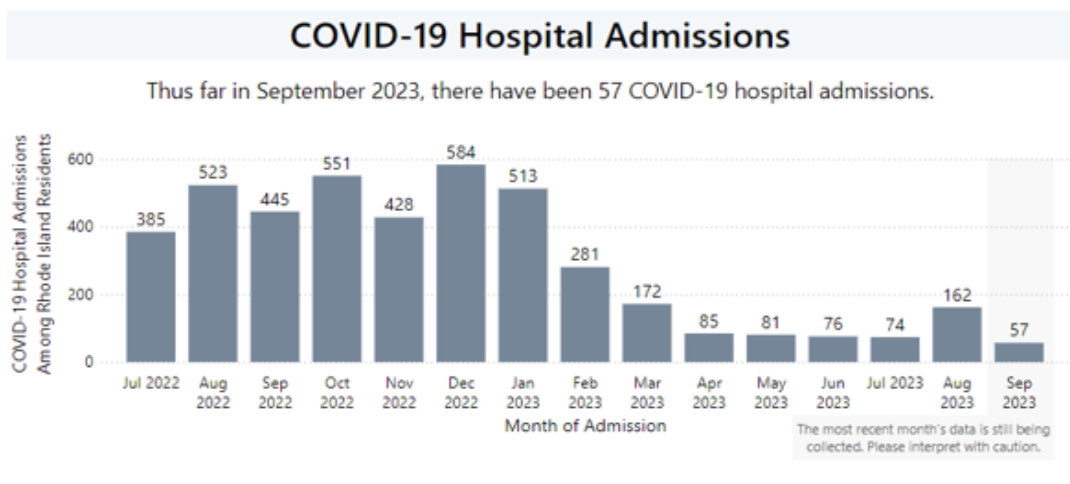September 2023
RI Department of Health COVID-19 Response Data Hub (arcgis.com). This is the Rhode Island Department of Health provider hub for COVID-19 information.
On August 10, there was a change to COVID-19 surveillance driven by the fact that there is much less public testing and so test positivity is not a reliable measure of COVID-19 activity. Earlier indicators are emergency department visit data where COVID-19 is identified as the reason for visit and also wastewater surveillance.
Genomic surveillance is also undertaken to determine which variants are circulating. Additionally, important information is whether or not new variants are more transmissible or cause more severe disease.
The current circulating variant is EG.5, and is derived from the XBB Omicron variant line. The updated booster being planned for this fall is expected to be active against this latest variant.
The newest variant is BA.2.86 and has been nicknamed Pirola. The variant has been detected around the world. It contains a large number of mutations and it is too soon to predict how this variant will behave. There is currently no sign that any of the emerging variants cause more severe disease. People will have some immunity to this variant because of previous infections, vaccination, but also very importantly, the cellular T cell system which is activated at the onset of illness, remembering the illness and producing appropriate antibody response.
The new boosters are expected to be available in October 2023. For patients who are currently not up to date, Department of Health staff recommends that there be a risk benefit/shared decision making between health care providers and patients as to whether they should receive a booster or wait for the newer booster in October.
It is important to understand that there may be a time in the early fall where there will not be any vaccine available and patients should plan for this. Thus DOH recommends that very high risk patients receive the current booster to become up to date and then in 3 months time, receive the updated Omicron booster.
DOH discussed a Nature article that was well done regarding household transmissions. This article found that 34% of household members will develop COVID-19 from the person in the household to initially become ill. If the ill person wears a mask in the house, this transmissibility rate is reduced by 67%. If the ill person is isolated and does not share a bedroom, the risk is reduced by 78%. This take-home point is that masking of the ill person while at home, will greatly reduce transmission to other people.
A surge is expected for the early fall as people move indoors, students return to school and focus on prevention strategies wanes. As seen in the Department of Health data, there is a slow rise beginning in August that is expected to peak in early October.
Tests may or may not be covered by health insurance and currently available at your pharmacy at a cost of approximately.around $20 for 2 tests. BIHS is looking into the State’s emergency management pathways requesting support for more tests if available.
COVID-19 will remain an endemic disease for an unknown period of time. We all must remain vigilant as we transition from warmer weather with improved ventilation to indoor situations where ventilation may be inadequate or crowds increase opportunity to spread disease.
Prevention Actions
At this time, we don’t know how well this variant spreads, but we know that it spreads in the same way as other variants.
- Get your COVID-19 vaccines, as recommended
- Stay home if you are sick
- Get tested for COVID-19 if needed
- Seek treatment if you have COVID-19 and are at high risk
- If you choose to wear a mask, wear a high-quality one that fits well over your nose and mouth
- Improve ventilation
- Wash your hands

